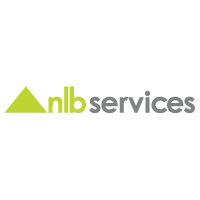In the last few decades, women have become a prominent part of strategic planning and leadership roles across industries. From technology to healthcare and finance, women are leading the path to develop and execute successful strategic plans for driving innovation and growth. With a specific focus on the contributions of women, organizations are rapidly advancing on the track of strategic planning and discoveries. New findings have suggested that women's organizations have witnessed profits increase.
Organizations that are committed to reducing gender bias and fostering women in the workplace are witnessing an increase in revenue. It is equally important to create an inclusive workplace and culture that can help retain women employees in the long term.
But what's driving these metrics?
In organizations, women introduce new perspectives to problem-solving and bring a different lived experience to the table. There has also been a growing body of evidence that indicates that gender equality further accelerates workplace innovation.
Role of Women in the Evolution of Strategic Planning
Many elements, like economic, social, and technical advancements, are affecting the global evolution of strategic planning. The participation of women in leadership roles has been a prominent component in the growth. The representation of women in strategic planning has risen dramatically, thus resulting in an inflow of fresh insights and approaches to generate strategic plans. Women in different roles within the organization bring unique perspectives, diverse experiences, as well as valuable skills to strategic teams.
A McKinsey report highlighted that organizations with a higher percentage of women in leadership roles reported better financial performance, along with higher profitability and stock performance. Research has also shown that gender equality and diversity in leadership positions lead to an increase in financial performance:
-
Improved innovation through openness and contribution across all levels.
-
Enhanced teamwork and productivity due to collective intelligence.
-
Greater loyalty and employee retention due to increased job satisfaction.
-
Improved purchasing power by acquiring access to underserved markets and bettering product-market fit
-
Improved reputation by identifying harmful policies and mitigating risks.
However, despite the clear evidence that organizations can benefit from women in leadership roles, there has been a significant gender gap in leadership positions in many organizations across industries and sectors.
Barriers to Leadership Roles Still Exist
Unconscious gender bias, such as comments, assumptions, or actions related to gender, is unintentionally harmful. Gender bias negatively impacts women directly. Research has highlighted that gender bias further impacts business performance negatively.
Women in organizations are subjected to a double-bind bias when navigating the workplace. For example, if a woman is assertive or forthright, they are often deemed aggressive and too unlikable to be a good leader. On the contrary, when a man exhibits the same behavior within the organization, they are often considered a great leader.
Unconscious gender bias impacts the psychological safety of women in the workplace. In organizations that do not have an actively developed inclusive framework to address unconscious bias, women in leadership roles can help maintain a constant level of self-awareness to navigate the situation. Gender-related bias creates tremendous barriers for women in the workplace, and research has identified a wider gap in resources, allyship, and sponsorship for women who aspire to be in leadership roles.
In order to start and continue the work required to create opportunities, space, and culture for women to rise to leadership roles, organizations can inculcate and follow the below-mentioned all-inclusive list as a strong starting place:
-
Commit to leveling unconscious bias through training
Many biases in an organization are deeply ingrained. However, annual training exercises will not deliver a solution. With constant year-long training, organizations can create and sustain a more inclusive environment.
-
Evaluate the existing hiring policies
In organizational operations, there is a need for deep work that requires reflection and scrutiny. By conducting unconscious bias, training in active processes through policies can enable companies to cultivate and foster more intersectional diversity, equity, and inclusion (DEI) frameworks. With continued training, organizations can support hiring managers and help decrease recruitment biases.
-
Enhance the visibility of women across organizations through special projects
Organizations can create opportunities and space for women to lead key initiatives. These opportunities will help in creating more visibility in the workplace and demonstrate capabilities. This will ultimately help open possibilities and allies to propel women to the next level quicker.
-
Create safer spaces for working mothers
Double shifts of moms working full-time jobs while juggling childcare and other responsibilities can no longer be ignored. The challenges are on the rise for dual-career couples, women of color, and single moms. Organizations can help working mothers thrive in the workplace by including and allowing flexible work schedules, closing gender pay gaps, and normalizing male parental leave for employees.
-
Ensuring psychological safety
Creating a work culture where employees are comfortable being themselves and can strive to reach extensive career goals requires allies. Organizations can also introduce programs that encourage these allies to voice their opinions. Research has highlighted that employees within organizations who offer autonomy and trust are 74% less likely to be stressed and have more energy at work, thereby increasing their productivity.
The Way Forward
Women in leadership positions are considered as powerful agents of change. And with the business landscape evolving continuously, organizations are discovering the transformative power of women in leadership. It is becoming evident that the inclusion of women in these roles leads to greater success.
Women leaders help in breaking down gender barriers as well as the stereotypes of women’s advancements. This further helps in driving innovation and collaboration. They present unique perspectives and bring a wealth of skills. By supporting women's leadership, organizations can maximize their potential. With the need for innovative and compassionate leadership on the rise, it is essential for organizations to promote and encourage female leadership and shape a better future for everyone.
An organization's reputation is a critical asset that impacts its financial performance along with long-term success. Many factors contribute to constructing a successful reputation, including its products and people. With the positive influence of female leadership, organizations can witness a driving force of progressive change. They can help in promoting and fostering workplace diversity, an incredibly important component of a company’s image.
Female leaders are known to have strong communication skills and other important traits critical for building a positive workplace culture. A positive workplace culture that prioritizes employee well-being and a sense of shared purpose, where all the employees feel valued and supported, is more likely to be engaged and productive with their work. With a positive workplace culture, organizations can also attract top talent, thereby enhancing their reputation as an employer of choice.
Conclusion
Women have played a major role and contributed significantly to strategic planning across organizations. And their influence is set to rise in the coming years. Women have played a critical role in stimulating innovation, fostering collaboration, and establishing innovative approaches to strategic planning. However, there is still a lot of work to be done for organizations to ensure that women hold equal opportunities to grow across different roles.
Organizations are harnessing a wealth of talent and fostering diversity and inclusion while confronting gender biases and presenting women with the resources to succeed. This ability to harness distinct perspectives, irrespective of gender, is critical for an organization's future of strategic planning. With stronger and more resilient capabilities, organizations can adjust to the ever-changing business landscape and encourage diversity and inclusion in the workplace.
With a presence in New York, San Francisco, Austin, Seattle, Toronto, London, Zurich, Pune, Bengaluru, and Hyderabad, SG Analytics, a pioneer in Research and Analytics, offers tailor-made services to enterprises worldwide.





















